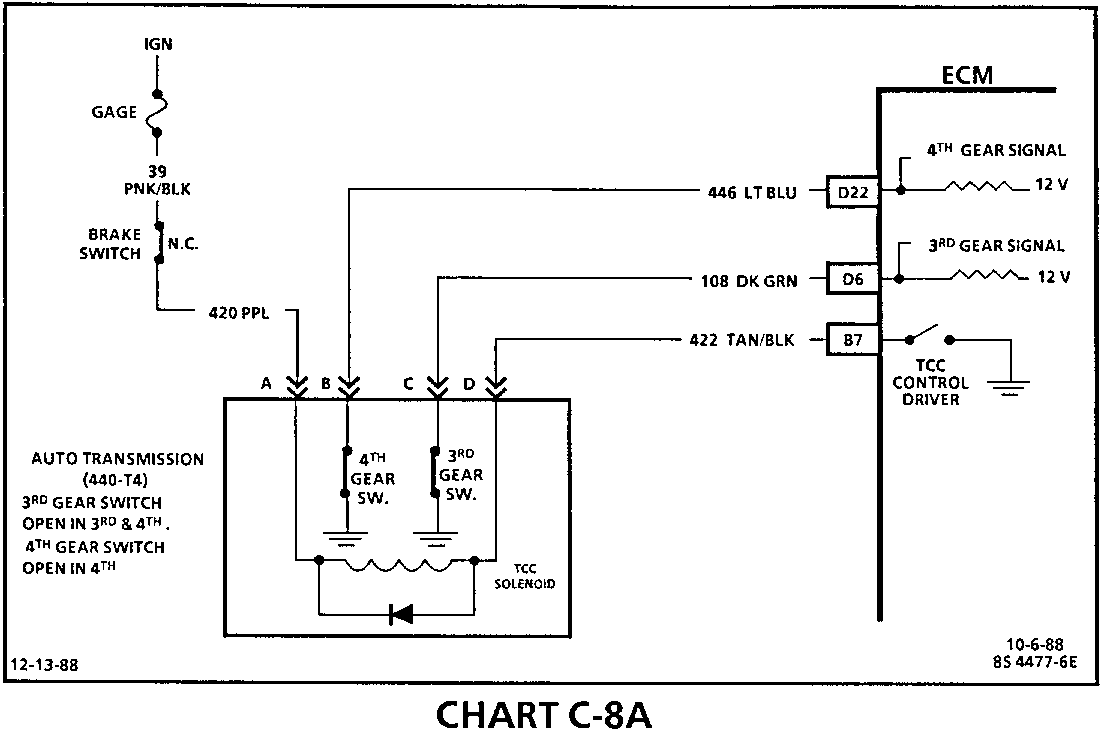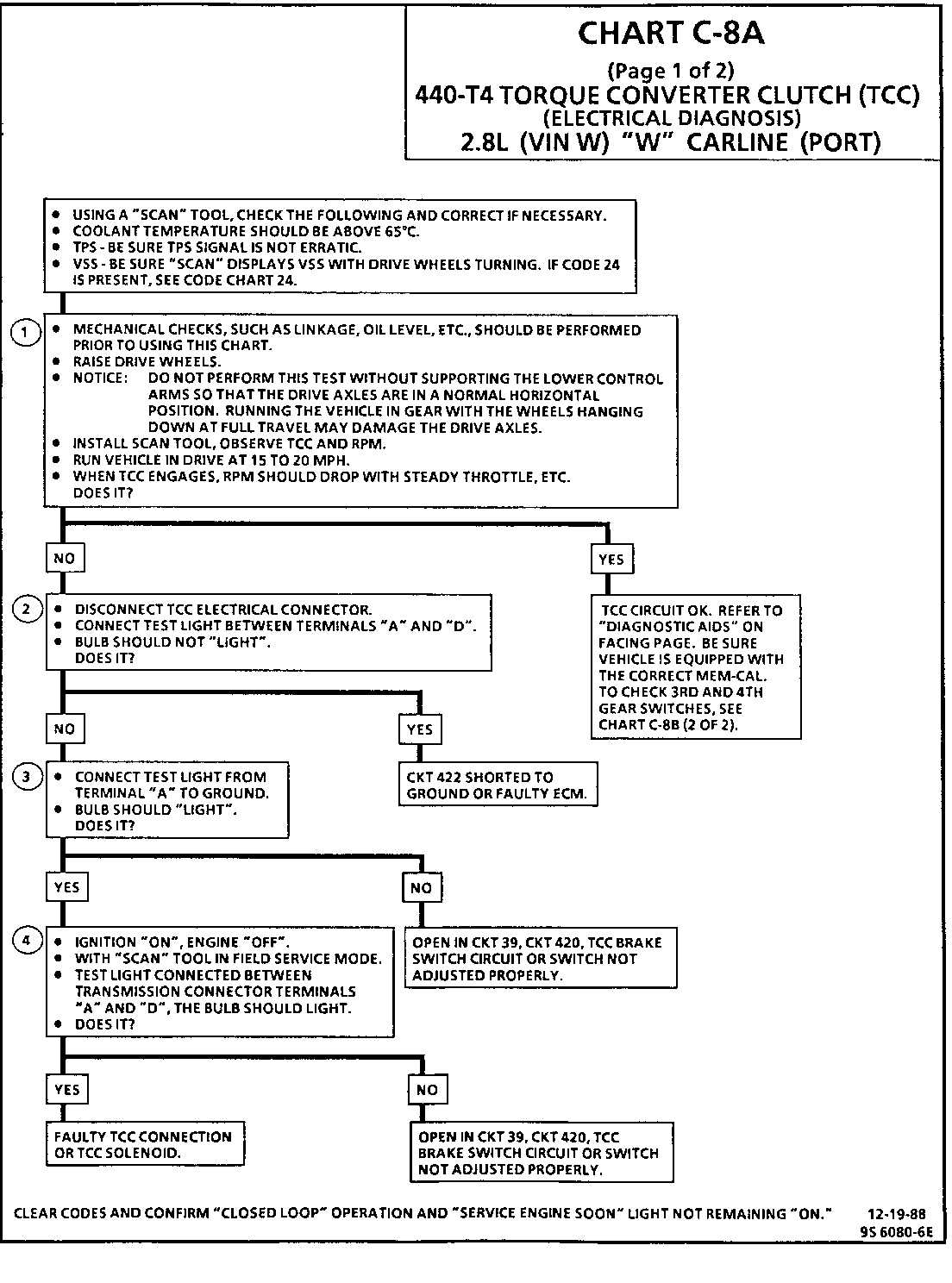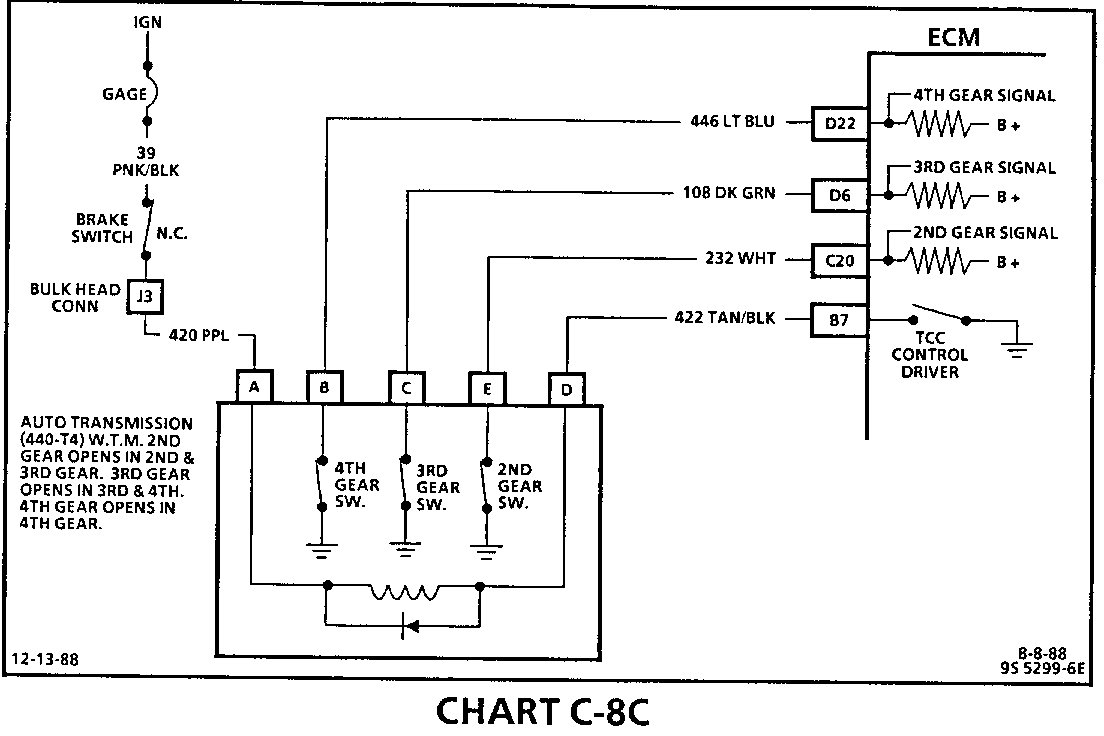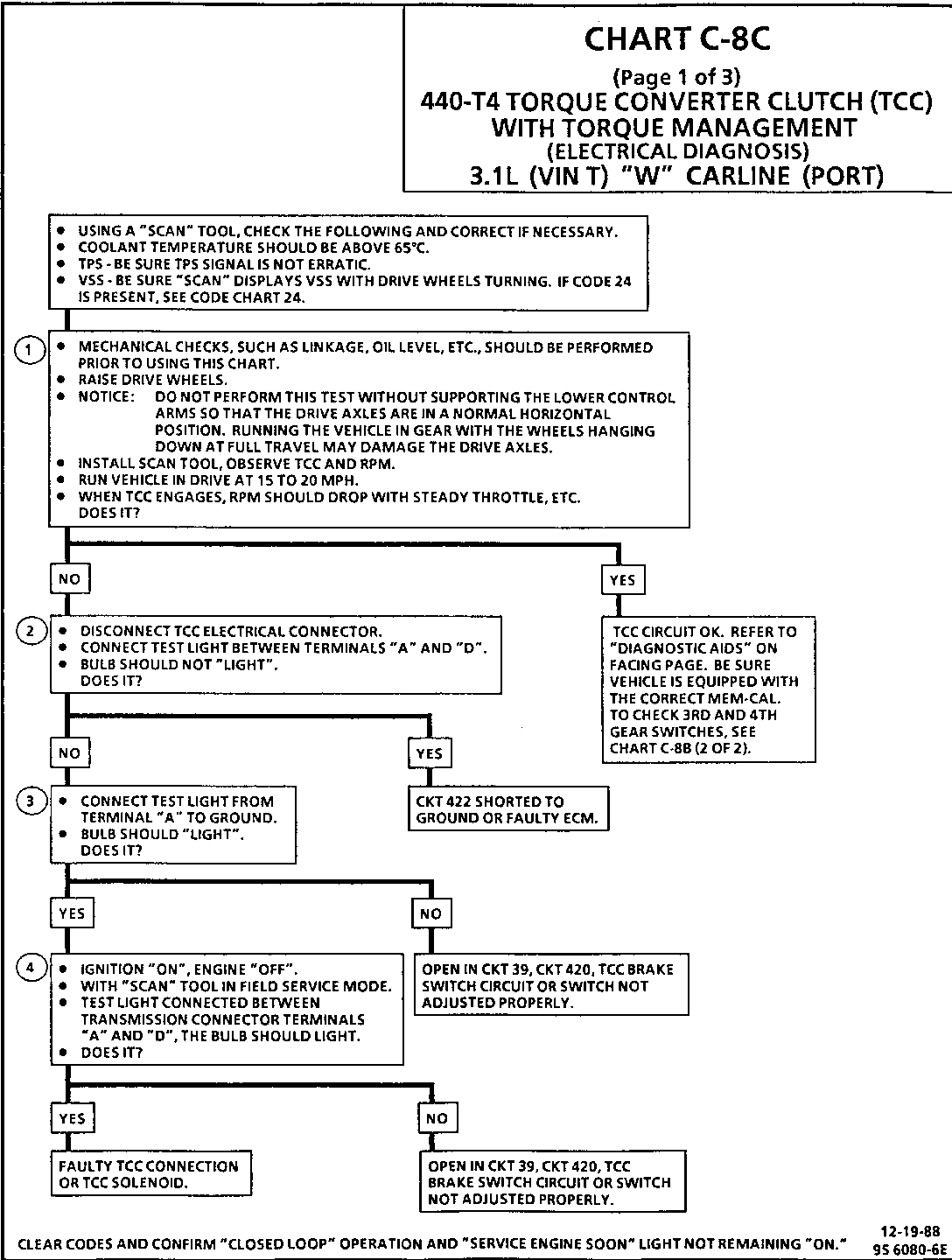MANUAL UPDATE CHARTS C-8A C-8C DRIVEABILITY & EMISSION

VEHICLES AFFECTED: 1988-89 2.8L, 3.1L (VIN T,W) "W"
This bulletin revises the Facing Page and Chart for C-8A (Page 1 of 2) and C-8C (Page 1 of 3) Torque Converter Clutch (TCC) Electrical Diagnosis in Section 6E "Driveability And Emissions" of the 1988-89 Service Manual for the "W" Carline with 2.8L LB6 (VIN W) and 3.1L LHO (VIN T) V6 engines. Terminal "F" of the ALDL for TCC has been deleted. The revised diagnostic procedure is attached.
CHART C-8A 440-T4 TORQUE CONVERTER CLUTCH (TCC) (ELECTRICAL DIAGNOSIS) 2.8L (VIN W) "W" CARLINE (PORT)
Circuit Description:
The purpose of the automatic transmission torque converter clutch feature is to eliminate the power loss of the torque converter stage when the vehicle is in a cruise condition. This allows the convenience of the automatic transmission and the fuel economy of a manual transmission. The heart of the system is a solenoid located inside the automatic transmission which is controlled by the ECM.
When the solenoid coil is activated ("ON"), the torque converter clutch is applied which results in straight through mechanical coupling from the engine to transmission. When the transmission solenoid is deactivated, the torque converter clutch is released which allows the torque converter to operate in the conventional manner (fluidic coupling between engine and transmission).
The TCC will engage on a warm engine under given road load in 3rd and 4th gears.
TCC will engage when:
Engine warmed up Vehicle speed above a calibrated value (about 28 mph 45 km/h) Throttle position sensor output not changing, indicating a steady road speed Brake switch closed
Test Description: Numbers below refer to circled numbers on the diagnostic chart.
1. This test checks the functional operation of the TCC circuit.
2. This test checks the TCC control driver in the ECM.
3. This test will confirm that there is B + to terminal "A".
4. This test confirms that the ECM has the ability to turn the TCC "ON."
Diagnostic Aids:
The "Scan" tool only indicates when the ECM has turned "ON" the TCC driver, and this does not confirm that the TCC has engaged. To determine if TCC is functioning properly, engine rpm should decrease when the "Scan" indicates the TCC driver has turned "ON."
440-T4 TORQUE CONVERTER CLUTCH (TCC) WITH TORQUE MANAGEMENT (ELECTRICAL DIAGNOSIS) 3.1 L (VIN T) "W" CARLINE (PORT)
Circuit Description:
The purpose of the automatic transmission torque converter clutch feature is to eliminate the power loss of the torque converter stage when the vehicle is in a cruise condition. This allows the convenience of the automatic transmission and the fuel economy of a manual transmission. The heart of the system is a solenoid located inside the automatic transmission which is controlled by the ECM.
When the solenoid coil is activated ("ON"), the torque converter clutch is applied which results in straight through mechanical coupling from the engine to transmission. When the transmission solenoid is deactivated, the torque converter clutch is released which allows the torque converter to operate in the conventional manner (fluidic coupling between engine and transmission).
The TCC will engage on a warm engine under given road load in 2nd, 3rd and 4th gears.
TCC will engage when:
Engine warmed up Vehicle speed above a calibrated value (about 28 mph 45 km/h) Throttle position sensor output not changing, indicating a steady road speed. Brake switch closed
Test Description: Numbers below refer to circled numbers on the diagnostic chart.
1. This test checks the functional operation of the TCC circuit.
2. This test checks the TCC control driver in the ECM.
3. This test will confirm that there is B + to terminal "A".
4. This test confirms that the ECM has the ability to turn the TCC "ON".
Diagnostic Aids:
The "Scan" tool only indicates when the ECM has turned "ON" the TCC driver, and this does not confirm that the TCC has engaged. To determine if TCC is functioning properly, engine rpm should decrease when the "Scan" indicates the TCC driver has turned "ON."




General Motors bulletins are intended for use by professional technicians, not a "do-it-yourselfer". They are written to inform those technicians of conditions that may occur on some vehicles, or to provide information that could assist in the proper service of a vehicle. Properly trained technicians have the equipment, tools, safety instructions and know-how to do a job properly and safely. If a condition is described, do not assume that the bulletin applies to your vehicle, or that your vehicle will have that condition. See a General Motors dealer servicing your brand of General Motors vehicle for information on whether your vehicle may benefit from the information.
